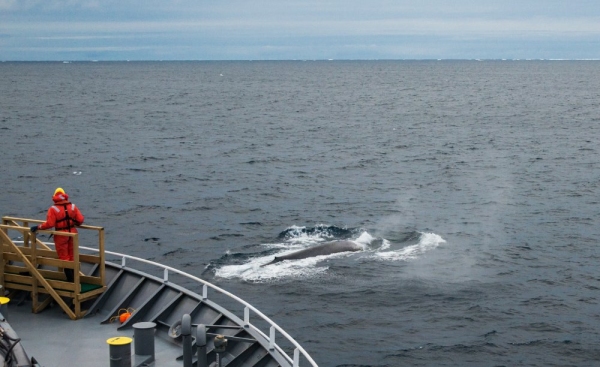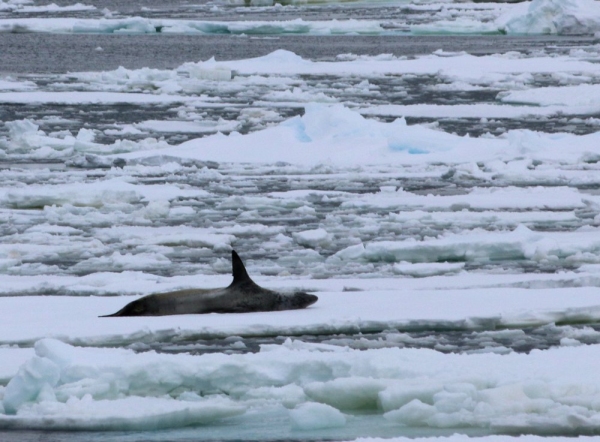It’s now day 18 on board the RV Tangaroa and spirits are as high as ever. After seven days of amazing weather and a lot of successes with the blue whale work in the northern Ross Sea we have decided to put the last three days allocated to this scientific objective on hold for later in the trip, and to head south to start our third scientific objective which is the demersal trawl survey.
The last seven days have been some of the most amazing days of my life! After leaving the Balleny Islands the passive acoustics team led us straight to a massive congregation of Antarctic blue whales. Antarctic blue whales were over-exploited to near extinction last century by industrial whalers. It is believed that the total population of this amazing marine mammal dropped to just a few hundred before a total ban was put on their capture. Since then it is estimated that the species has recovered to a few thousand at a slow but steady pace, but it is almost impossible to count them accurately because of the low numbers, and with how hard it is to actually find them.
It has been easy to forget that we have been studying one of the world’s rarest species of whale over the last week though, because each day we were spotting between 6 and 20 blues. Once located, we visually tracked their behaviour and recorded the sightings. Then, once we were all ready, we were able to start our close approach. Close approach involved slowly moving the ship closer and closer to the blue whales which is a super hard task given that you only see these giants for a matter of seconds before they take their next breath and submerge below the glistening blue water surface. Once under the water it is anyone’s guess as to where they will come up next!
For the largest animal to have ever lived on earth, growing to a length of 33 metres and to a weight of about 180 tons, it is remarkable how agile the whales can be - they can turn 90 degrees on a dime, and with one big powerful stroke of their fluke they can reach speeds of 33 miles per hour (much faster than the Tangaroa’s maximum speed) and be gone. Luckily for us the majority of blues didn’t seem to mind our company and would let us get close enough to take their photo for photo-identification. One blue whale nicknamed Penfold was first observed at the Balleny Islands and has now been re-sighted 4 or 5 times. He is always a welcome sight to see again.
Standing on the bow of the Tangaroa and having the world’s largest animal come up for a breath right beside you is the most incredible thing. You look out over the side of the boat and then, just before it breaks the surface, you see the tell-tale massive light blue outline of the whale under the water. It then breaks the surface and its body rolls through the air. It lets out an almighty blow as it exhales, and sends a stream of water metres up onto the air. Only now can you get a true appreciation of the size of this animal and it is just absolutely phenomenal!
Last night we left the blue whale hotspot and started heading to the west. The sea ice greatly dictates our movements and we have to find the smallest patches to go through to be able to find an entrance to the Ross Sea.
We had our first little bit of shaky weather last night. This made the underway water sampling more difficult for me, but I managed to get it done with minimum water spillage. It’s a crazy feeling lying in bed as the ship goes up massive swells and then skims down the other side whilst rolling side-to-side. Yet this morning I woke up to flat seas and blue skies. I walked up onto the bridge and was blinded by the light reflecting of the massive amount of ice that surrounded us for as far as the eye could see. Once my eyes adjusted I could take in the true beauty of it all and was completely blown away. To top it all off, just to the starboard side of our ship, was a leopard seal basking in the sun.
Zac


